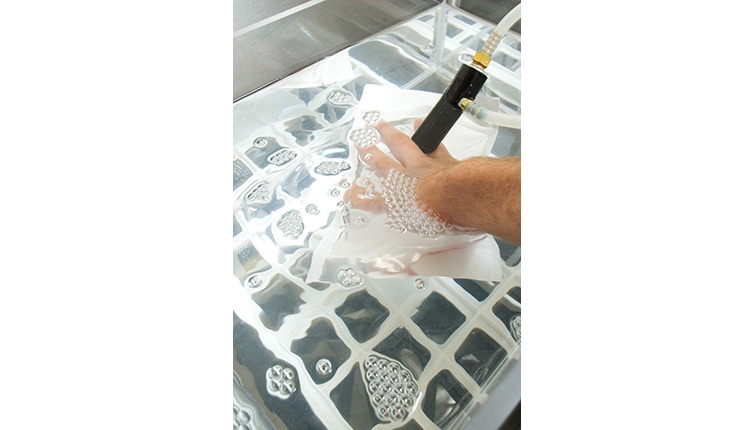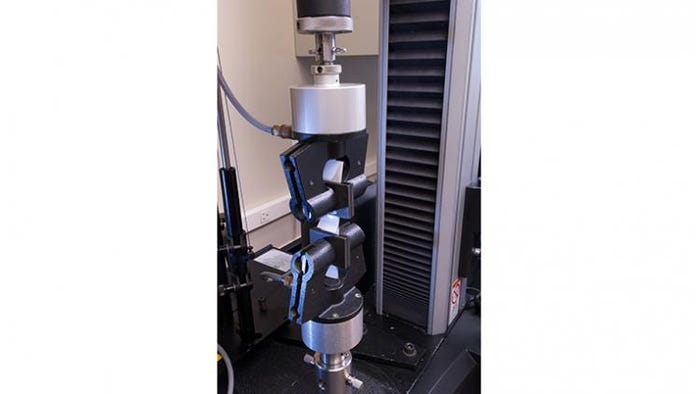December 20, 2015

Achieving and maintaining sterility are two of the industry’s biggest challenges. Understanding package testing and validation is essential.
By Wendy S. Mach, Packaging Section Leader, BS, RM (NRCM), CQA (ASQ), Nelson Laboratories
If you could sum up all the main concepts of all the standards committees, debates, conferences, lectures, and investments of the medical device industry into one word, that word would be “sterility.” Achieving sterility and maintaining sterility are two of the industry’s biggest challenges. Facilities are built, equipment is purchased, and processes are developed to achieve and ensure initial sterility. Maintaining device sterility is critical in the desire to protect the patient and prevent transmission of disease. Maintaining sterility from the production line to the surgical suite is largely the objective and function of sterile packaging. The materials, design, and processes associated with sterile packaging are a major challenge for every medical device manufacturer, and the test methods and validation process must be understood in order to develop a proper validation test plan.
Selection of the sterile barrier system (SBS) materials will significantly determine your ability to design a sterile package that is suitable for the unique size, weight, and shape of your new medical device. It would also be advantageous to consider the packaging validation criteria and test plan during the initial design phase of the sterile package.
All too often, manufacturers use “cut-and-paste” design schemes and testing plans and then discover failures late in the testing process. Discovering a design failure late in the process, while performing the validation, will bring everything to a grinding halt, create unexpected delays, and will often send the project back for package redesign.
Understanding the package testing and validation process will greatly help in the selection of materials and the final package design. Additionally, understanding the primary causes of package failure will accelerate the process of identifying the root cause, implementing corrective action, and moving quickly to an effective solution.
Packaging attributes and validation testing
There are three primary attributes of medical device packaging: integrity, strength, and microbial barrier. The industry committees and agencies have prescribed tests to validate these attributes. Within each attribute, manufacturers must select at least one test.
Integrity evaluation ensures continuous package sealing and identifies any failures in the continuous seal. The two most common test choices for this evaluation are dye migration and bubble emission:
• Dye Migration. This is a test in which liquid dye is introduced inside the package. The package is rotated until all seals have been exposed to the dye. A channel of dye visible through the seal indicates an open channel in the seal of the package and a breach of integrity. This kind of failure is likely related to a problem with the package sealer and can generally be attributed to a temperature, time, or pressure setting during the sealing process. Lids not seated correctly on platens can leave gaps contributing to a failure. The failure could also be caused by over sealing, a flaw in a raw material, operator failure, or equipment failures. All components of the sealing process must be monitored, controlled, and measured.
• Bubble Emission. Bubble emission is a whole package integrity test and is done by immersing the package into a tub of fluid and then inflating or introducing air into the package. Failures are found when bubbles are observed escaping from a single point on the package. Bubble emission failures are often the result of friction and rubbing caused during shipping, handling, and transportation and processing of the packaging materials. Folds in the packaging material can also be a source of failure, as this fold can become weak and cause leaks. Pointed, sharp, or heavy medical devices can also create pinhole failures caused by friction or impact with the packaging.
Strength evaluation determines the amount of force required to open the package. Failures can also occur during the three main tests for package strength: seal peel, burst, and creep:
• Seal Peel. Seal peel failures are generally very similar to those of the dye migration test. Seal peel testing does not necessarily look for failures as much as it helps medical device manufacturers (MDM) optimize sealing parameters for their equipment.
• Burst and Creep. The burst test identifies the pressure at which the weakest seal will burst. This is not a pass or fail test; it simply sets the burst pressure benchmark for the packaging. The creep test can then be conducted by inflating the sealed package to 80 percent of the burst test benchmark and measuring the length of time or ‘creep’ until package failure. The creep test checks to see whether the packaging will hold at pressure for the time needed.
When performing these tests, it is important to understand the geometry of the SBS. Different package sizes and shapes can have significantly different results. Ensuring that you use the correct method (restrained or unrestrained) will help ensure proper test plans that provide the needed data.
Microbial barrier tests evaluate the package’s ability to withstand microbial penetration. It should be noted that industry has not yet agreed on a method for demonstrating the microbial barrier properties of a package. Determining the appropriate barrier specification, materials, and validation testing is the responsibility of the medical device manufacturer. The selection of tests used is dependent on the SBS materials. That being said, the FDA consensus standard for testing porous materials is the microbial ranking exposure chamber method. This test challenges the barrier material by detecting transmission of aerosolized microbial organisms through the material. An alternative test for porous or nonporous material is the whole package aerosol challenge test. This test is conducted similarly to the microbial ranking test except it uses whole packages rather than swatches of material. It is a fairly complex test and should be tailored specifically to meet varying packaging designs.

Seal peel testing often helps medical device manufacturers optimize sealing parameters for their equipment. Image courtesy Nelson Labs.
Discovering the root cause of a failure
There are several tools available to help identify the root cause of a package failure:
• Visual inspection examination. This can identify gross defects such as holes or abrasions.
• Microscopic inspection. Examining the package microscopically may determine whether the failure was generated externally or from within the package.
• Polymeric analysis. This test determines whether the materials changed during the manufacturing or sterilization process. Use of differential scanning calorimetry, Fourier transform infrared spectroscopy (FTIR) and gas chromatography (GC) test methods can help identify issues such as brittleness and cross-linking.
• Risk analysis tools. Fishbone, failure mode effectiveness analysis, flow diagrams, in-process reviews, etc., can be used to determine actions, conditions, or effects that occurred during the process.
• Test method validation. Ensure the test method has been validated. Precision and bias statements found in the standards can help assess any variability found in the results.
If the root cause cannot be identified by these methods, an in-depth investigation to determine the source of the defect is required. Product, process, package, people, and environment are the five most common sources for defects. Evaluation of the SBS itself will help determine whether weight, size, sharp edges, and movement within the package helped cause the failure. If these items were not evaluated as part of the design input, these physical characteristics can lead to expensive corrections such as retooling, new packaging materials, repeated qualifications, and repeated validation testing.
Reviewing the manufacturing trail can help identify many failures. These issues should generally be discovered during the process validation and addressed before moving to performance validation of the SBS. Packaging defects caused during the manufacturing process can generally be attributed to the manufacturing equipment.
Questions to consider are:
• Is the machinery maintained according to manufacturer
specifications?
• Is the calibration current?
• Have the process parameters established by the validation been maintained?
Root-cause investigation will include an evaluation of supplier and material origination. Reviewing incoming inspection records for raw materials may identify a root cause. Discussions with suppliers can identify minute changes that continue to intensify throughout manufacturing.
People can also cause defects. Did appropriate personnel receive the correct training? Were they distracted during the manufacturing process? Did they follow established procedures? All of these questions are valid and need to be asked of those involved in the process. Connecting package defects to human error is difficult. Some examples of human error may include habit, lapse of memory, or lack of big picture awareness. Ensuring personnel are trained and engaged in the process can go a long way in preventing defects.
Another area to evaluate is the environment. Many pieces of equipment are validated as part of a controlled environment. Out-of-range changes in the environment may affect packaging integrity. Evaluation of seasonal changes can provide insights into possible negative impacts.
Finally, a review of the entire system may be necessary including supply, materials, processes, sterilization methods, and secondary packaging. One example would be the use of paper packaging combined with radiation sterilization. Over time, the effects of the radiation can lead to brittle packages that cannot maintain product integrity over the life of the package. Root-cause analysis and investigation into all potential causes is critical. Package failure could result from a combination of system failures, and correcting a single factor will not completely correct the problem.
Once the root cause of the failure has been identified, a corrective action plan must be developed. Sometimes these plans will be quick and easy to implement, such as retraining. Other times they can be highly complex, possibly leading to a complete retooling or change to a different sterilization method.
With the correction implemented, the next step is to verify its effectiveness on the process. Depending on the change and the risk involved, determine the stage at which the validation should be continued or restarted if necessary. Post validation verification is required to ensure that the corrections solved the problem and that another problem was not created during the correction process.
Conclusion
Whether a manufacturer changes a material in device packaging, looks for ways to cut costs, considers green alternatives, or simply launches a new device with new packaging materials, a clear understanding of the standards and tests used to validate packaging is necessary. Remember that once the validation has been performed, repeating it is not necessary unless one of the variables in the packaging has changed. Once completed, packaging becomes a seamless part of the overall production process, ensuring the delivery of safe to use and well-protected medical devices.
Nelson Laboratories will be exhibiting at Booth 3228 at MD&M West 2014 in Anaheim, CA, February 11-13.
___________________________________________________________________________________
Want more medical packaging? You’ll find aisles of all kinds of packaging at WestPack 2016, Feb. 9-11, in Anaheim, CA.
___________________________________________________________________________________
You May Also Like


